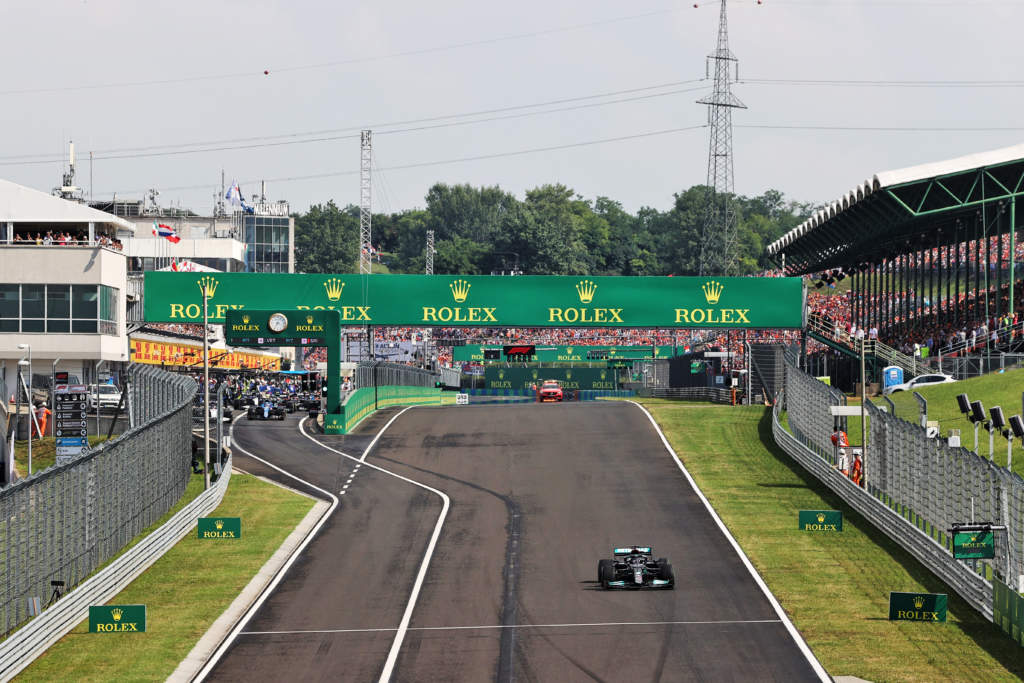Up Next

Mercedes has admitted that the decision not to bring in Lewis Hamilton for slicks for the standing restart at the Hungarian Grand prix, which led to him being the only car to line up on the starting grid with the remaining 14 cars pitting, was a mistake.
Team principal Toto Wolff backed the decision in an interview with Sky Sports F1 immediately after the race and later re-iterated it was “100% the right decision and I stand by it”.
But speaking in a Hungarian Grand Prix debrief video released by Mercedes, technical director Mike Elliott admitted that, in hindsight, the call was a mistake given Hamilton emerged from his stop to switch to slicks a lap later left him last and just over five seconds off the back of the pack.
From there, Hamilton recovered to third place and finished only 1.859s off winner Esteban Ocon.
Elliott laid out the reasons for the decision, and also stressed that avoiding pitting in a packed pitlane also reduced the risk of a collision on being released from the pitbox, such as the one caused by Alfa Romeo releasing Kimi Raikkonen into Nikita Mazepin, which eliminated the Haas from the race.
“Clearly, in hindsight, we made the wrong choice, but you have to bear in mind those decisions are really, really tricky,” said Elliott.
“We agonised over what tyre to fit at the very start of the race, as it turned out the inter was definitely the right choice because it started raining on the lap to the grid.
“We agonised over what tyre to fit after the red flag and clearly all of the cars fitted inters. And on that lap to the grid, even though all the drivers had fitted inters, clearly others decided to change their mind and we should have too.
“But the reality is it’s actually more difficult for us as a team than it is for the other teams. When you are the front car, you can’t see what everybody else is doing – you are the lead car.
“When you are further back in the chain, you can see what others have done and you can change your mind accordingly. You can use that new evidence to your advantage.
“The second problem for us is that we have the first pitbox in the pitlane. So, as we’d have come into the pit lane and we’d boxed, all the cars would have been pouring past and it would have been very difficult for Lewis to get out and that would have delayed us.
“The second problem with that is if we had tried to force our way out into the pitlane we could have collided with another car and we actually saw that happen in that sequence of pitstops.
“What we were looking at is, what is the best strategy for us? And actually, we were thinking that we wanted to be conservative with that. Our main rival was further back and what we needed to do was to not make a silly mistake and end up crashing into another car.
“As it happened, we would have been better off pitting, even if we had to wait to the back of the queue.”
Elliot was also asked where he suspected Hamilton would have emerged had he pitted under the safety car, assuming the rest of the field had followed him in.
He was unsure, but suggested Hamilton could still have been in the top six.
“It’s quite difficult to know because it really depends on trying to find a gap in the pit lane to get out of your pit box,” said Elliott.
“We think P5, P6, maybe something like that. But probably as I said before, really, the bigger risk for us was colliding with another car in the pitlane trying to force our way out and we would have had to have been conservative.”





